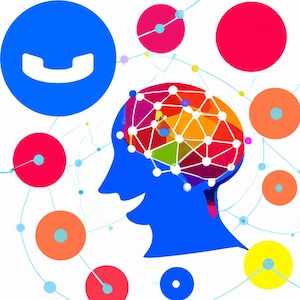
Networks and Memory
When we need to remember something, we create links between the various parts of what we need to memorize. It’s as if we’re building a network, and each part of what we need to remember is a piece of this network.
There are two networks that we use every day to remember things. One is language: when we speak, we connect words together, and every sentence we utter is a “path” in the network of words. Some words we use often and are linked to many other words, while other words we use rarely.
The Brain Network
The other network we use is our brain. One of the greatest brain experts, Kandel, explained that in the brain, information is carried by groups of interconnected neurons, not by single neurons. Therefore, even in the brain, the keyword is “connection”.
Even though our brain is very complex and can remember things in different ways (for example, it remembers some things for a short time, others for a long time, some as places, others as actions), the way it remembers things is always the same: it creates new “paths” between neurons. This is what a psychology expert, Hebb, understood in 1949.
Neuron Activation
Hebb understood that when two neurons activate together many times, the bond between them strengthens, and this is the trace that makes us remember things. If two neurons activate together often, our brain understands that they need to be connected, and thus it creates a “path” between them.
When we need to remember something for a long time, the link between the neurons becomes definitive. However, if we need to remember something for a short time, the bond weakens if we do not often use those neurons. In essence, in our brain, the bonds we use often become stronger, while those we use less weaken and eventually disappear. It’s a bit like when we talk: if we often use two words together, our brain understands that they need to be connected. A hundred years ago, for example, nobody said “too cool”, so these two words were not connected. Today, however, we often use them together, so our brain has created a bond between them.
